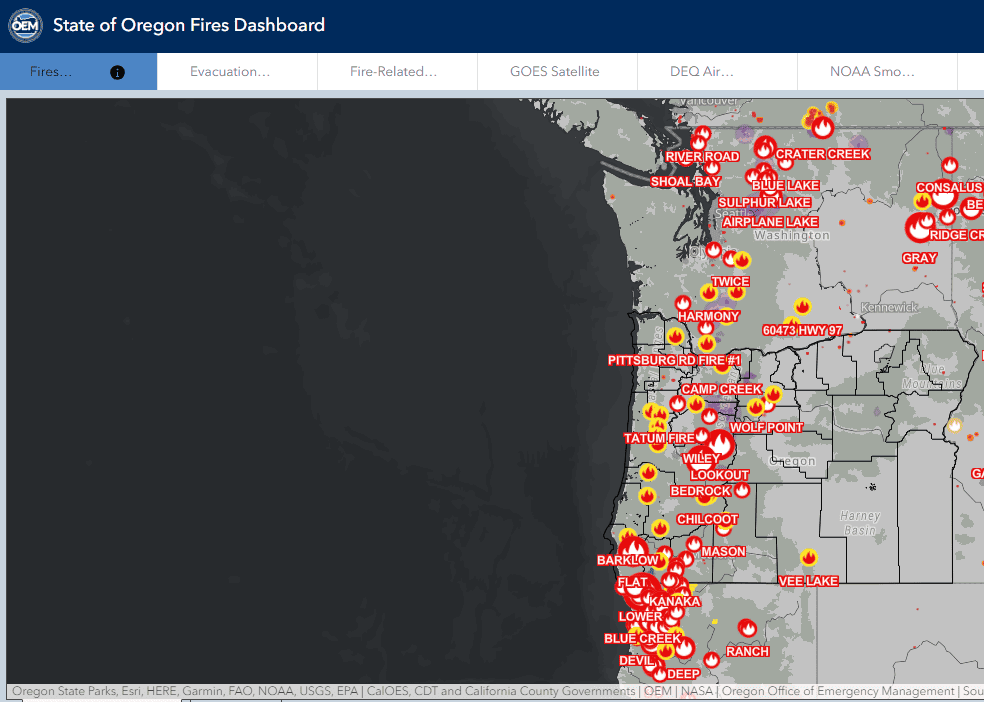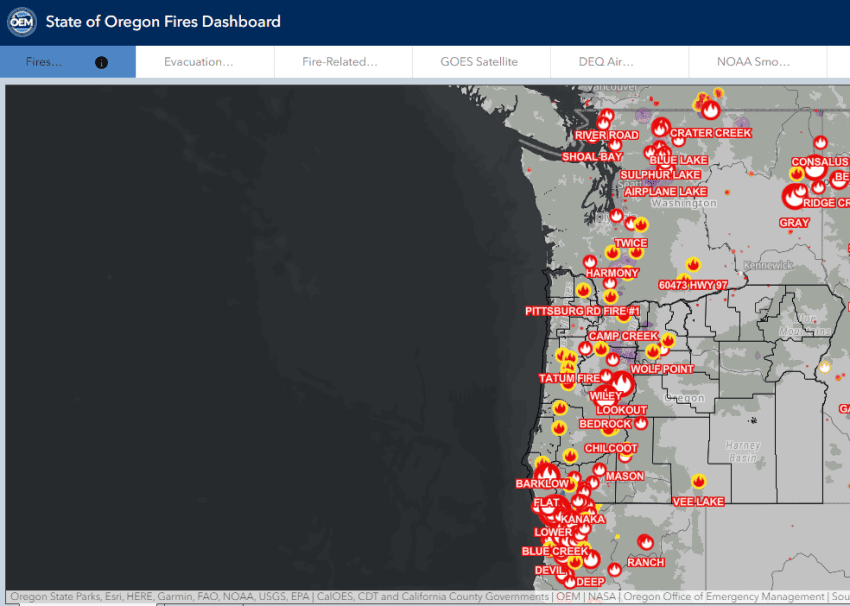(Salem, Ore. Aug. 25, 2023) – Starting Thursday night, August 24th and into Friday morning, August 25th, Oregon experienced many lightning strikes that affected Southern Oregon up to Northwest Oregon. With multiple crews engaged in initial attack on new fire starts and east winds forecasted for today and tomorrow, now is the time for Oregonians to be informed and prepared.
Oregonians are urged to actively practice wildfire prevention, prepare their home and a go-bag for evacuation and know where to sign up for alerts.
How can people help prevent wildfires?
Additional human-caused fires on the landscape will draw the firefighting efforts away from the lightning-caused fires and put extra strain on ground and aviation resources.
You can help prevent large wildfires by:
- Checking and following your local fire regulations.
- Remember that debris burning is prohibited statewide.
- Return to check on your burn site if you burned earlier in the year.
- Make sure your car has been recently serviced to avoid faulty parts throwing sparks.
- Don’t drag tow chains.
- Recreate responsibly and put your campfire DEAD OUT before leaving it.
- Avoid parking vehicles on tall, dry grass.
How can I prepare my home to be resilient against fire?
Creating defensible space, a buffer between your home and the grass, trees, shrubs, or wildland area, is your home’s first defense against wildfires. Give your home a fighting chance and protect your family. Prepare today. Be ready when wildfire strikes. It’s essential to regularly maintain your defensible space to prevent the accumulation of dry vegetation and debris. There are things you can do today to protect your home:
- Request a free defensible space property assessment. The fire service professional will use an assessment form on a smartphone app and fill out the form with you as you walk around your property to give you tailored recommendations to protect your home. You can request a free assessment at Oregon Defensible Space.
- Make sure roofs and gutters are clean from leaves, conifer needles, and other debris.
- Make sure leaves, conifer needles, deadwood, bark mulch, and other debris are removed from the surface of, around, and below decks and fences.
How can I prepare myself in case I need to evacuate?
The Oregon Department of Emergency Management (OEM) urges everyone to prepare for wildfires and other emergencies by knowing evacuation levels, staying informed, having a plan, and making a go-kit.
Evacuation Levels
- Oregon follows a three-level evacuation notification system, each structured around the readiness need and threat level.
- Oregonians should become familiar with “Be Ready, Be Set, Go!” evacuation levels to make informed decisions when receiving evacuation notices.
- OEM urges people to evacuate whenever they feel unsafe, as conditions can change rapidly; individuals should always make the best decision for their safety.
- Following an evacuation, people should not return to the area until public safety officials announce it’s safe.
Stay Informed
- Stay informed by signing up or updating your information with gov to receive evacuation alerts.
- Check your phone settings to ensure wireless emergency alerts are turned on.
- Find the websites for your county emergency management, sheriff’s office, or tribal police and follow them on social media.
Have a Plan
- OEM offers an evacuation checklist that explains what to do before, during, and after an evacuation.
- Establish a communication plan with a list of important contacts and a safe place for loved ones to meet if they are separated during an emergency.
- Identify multiple evacuation routes from home, work, or school and plan for transportation needs.
- People with disabilities should consider individual circumstances and specific needs when planning for evacuation, such as special equipment, transportation, and service animals.
- Have an evacuation plan for pets, make a pet evacuation kit in a tote bag or pet crate, and plan for transportation and sheltering of large animals such as horses and other livestock.
Make a Go-Kit
- Assemble an emergency kit of essential supplies that can be grabbed quickly.
- Pack an easy-to-carry backpack or bag for each household member with health and safety items such as food, water, medication, flashlights, phone chargers, and clothing.
- Visit gov or the American Red Cross for recommended emergency kit items.
Find more information and resources at Wildfire.Oregon.gov.
Here is a screen shot of the current fires in Oregon and Washington from wildfire.Oregon.gov – the yellow graphics are NEW fire starts from the recent lightning. Please heed the warnings and be safe when recreating, have a plan and be prepared.




.gif)